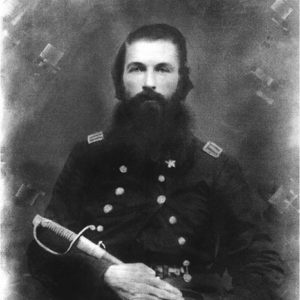calsfoundation@cals.org
Skirmish at Longview
aka: Skirmish at Easling's Farm
|
Location: |
|
|
Campaign: |
Expedition to Mount Elba and Longview |
|
Date: |
March 30, 1864 |
|
Commanders: |
Lieutenant Grover Young, Lieutenant Frank M. Greathouse (US); Unknown (CS) |
|
Forces Engaged: |
Elements of the First Indiana Cavalry and Fifth Kansas Cavalry (US); Unknown (CS) |
|
Estimated Casualties: |
None (US); 260 captured (CS) |
|
Result: |
Union victory |
Longview, situated in the northwest corner of Ashley County on the Saline River, was an important transportation hub for antebellum Arkansans. When the Civil War broke out, it became even more important due to both armies’ desperate need of transportation routes for military operations. River routes were especially important in Arkansas, which had only thirty-eight miles of railroad tracks at the start of the war, the fewest of any Confederate state. By 1864, Union forces had captured the northern two-thirds of Arkansas, and the bulk of the remaining Confederate troops in the state had retreated to camps near Camden (Ouachita County). A Confederate pontoon bridge built over the Saline River at Longview made the town a crucial link between Confederate forces in Camden and the port of Gaines’ Landing on the Mississippi River.
Colonel Powell Clayton, commander of the Union garrison at Pine Bluff (Jefferson County), received a report on March 27, 1864, indicating that Confederate troops under Brigadier General Thomas Dockery were preparing to move out of Monticello (Drew County). Clayton judged that Dockery would move toward Camden, crossing the Saline River at Mount Elba (Cleveland County). He determined to place his infantry and artillery there, while at the same time sending a detachment of cavalry to Longview via Warren (Bradley County) to destroy the Confederate pontoon bridge there.
Lieutenants Grover Young and Frank M. Greathouse reached Warren at around midnight on March 30, 1864, with 100 picked men from the First Indiana Cavalry and Fifth Kansas Cavalry. Proceeding down the road toward Longview, they took several prisoners, from whom they learned that there was a large wagon train at the Saline River crossing. The Union horsemen arrived at Longview undetected under cover of darkness, charged into the enemy camp, and demanded a surrender. The Rebels, having been taken completely by surprise, immediately acquiesced. The Federals rounded up their prisoners, destroyed the bridge, and burned thirty-five Confederate wagons loaded with supplies and ammunition.
The raid was a complete Union success. Traveling eighty miles in twenty-four hours, the Union cavalrymen accomplished their objective of destroying the bridge and captured 260 prisoners and 300 horses and mules, along with a payroll chest containing over $60,000. They also helped several slaves escape to the safety of Union lines. Young and Greathouse were commended “for their gallantry, energy, and skill” in Col. Clayton’s account of the Mount Elba and Longview expedition. “The Long View raid,” wrote Clayton, “reflects the highest credit to Lieutenants Greathouse and Young, and for brilliancy and success is almost without a parallel.”
For additional information:
Etheridge, Y. W. History of Ashley County, Arkansas. Van Buren, AR: Press Argus, 1959.
The War of the Rebellion: A Compilation of the Official Records of the Union and Confederate Armies. Series I, Vol. 34. Washington DC: Government Printing Office, 1891.
Roy Wisecarver III
Crossett, Arkansas
 Civil War Timeline
Civil War Timeline First (Crawford’s) Arkansas Cavalry (CS)
First (Crawford’s) Arkansas Cavalry (CS) ACWSC Logo
ACWSC Logo  James T. Poe
James T. Poe 




Comments
No comments on this entry yet.